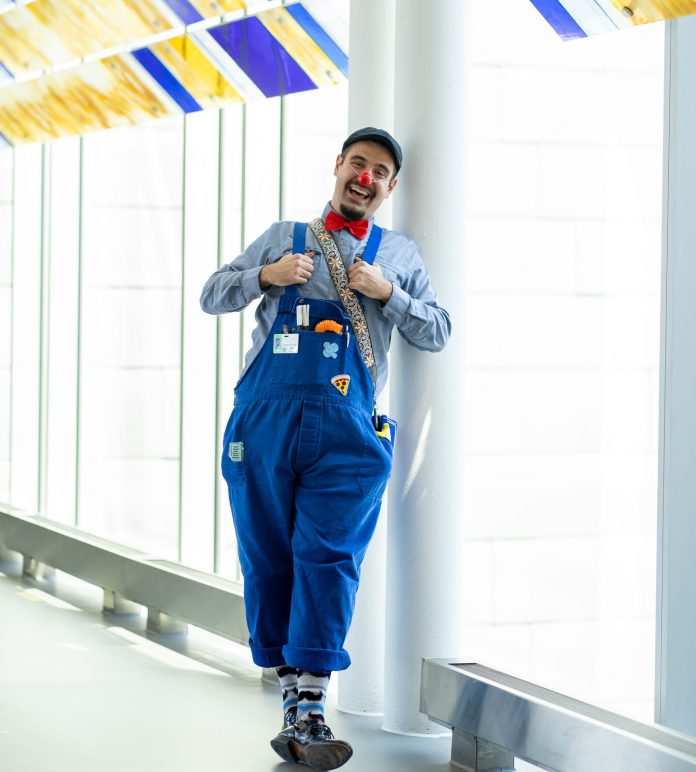It was clear from the time Leo Dragonieri was young that he aspired to do something in the arts.
Dragonieri came from a family of educators and art lovers. He spent a lot of time at theatre shows, in acting, music and dance.
When he arrived at high school, he thrived in the arts department and decided to study in the Theatre Conservatory Training Program at Humber College. Dragonieri continued to get his bachelor of fine arts at York University. During his time in school, he learned about the art of clowning.
“I just wanted to keep learning and stay curious of that world and that art form,” said Dragonieri.
He now works at Holland Bloorview Kids Rehabilitation Hospital as a therapeutic clown. Dragonieri loved the idea of using his creative skills and abilities to be in service of others.
A typical day as a therapeutic clown is very busy. Many mistake this job to be filled with fun and although it can be, it is so much more than that.
Dragonieri works three days a week along with his partners as it is a dual position. Working the hours of 10 a.m. to 6 p.m. the day normally starts off in the clown office, where he checks the clown emails, the clown phoneline and debriefs with his colleague.
“I think it’s very important in this work to check in with your partner too because you’re working so closely with each other,” he said. “To know you’re on the same page or if something is bothering them is a good thing to be aware of.”
The morning continues with reorganizing and going through any administrative work. The duo will then proceed onto their clown rounds, which is when they interact with children.
During this time, they connect with the child, debrief on how they have been doing, and gather any new updates or information. Almost all the work they do is improvised based on the client themselves, so the gathering process is important.
Therapeutic clowns take the time to learn about the children in the hospital along with therapeutic recreation. Often the two work together and share the kid’s likes and dislikes so they can intertwine it with their work.
“One of the most challenging things is just being present and engaging the room all the time. You’re always in constant assessment of what’s going on with the situation, the room, the client, your partner and then yourself,” Dragonieri said.
He finds this job is all about “putting your best foot forward” and taking in what you experience and how you gel with it. But he also believes that this job is filled with rewards.
“Knowing you’re able to be in service for these clients, there’s a hope that even for a brief moment you might have made their day, where they don’t think about why they are here or the pain. Providing them joy, alleviating any stress, or restoring a sense of control to the client,” Dragonieri said.
He believes connecting with the client you’re serving is the most “beautiful” thing as do his two collogues, Suzette Araujo and Manuel Rodriguez.
“Leo has grown right before my eyes,” Araujo said. When he was auditioned two years ago, he had exactly what Araujo and Rodriguez were looking for; a good heart, compassion and empathy.
Araujo says he works on himself and takes classes to better his clowning as it is a profession that takes “many years.”
One of the skills that takes a long time to perfect is “understanding who you are as a person but also understanding a different side of you,” Araujo said.
Manuel Rodriguez has been a therapeutic clown for 15 years. He describes Dragonieri as an “amazing individual” who is sweet, caring and aware of others.
Rodriguez said the job can be demanding physically and mentally but working with Dragonieri is pleasant and always filled with excellent communication.
“He’s a gem,” Rodriguez said.
The workers at Holland Bloorview Kids Rehabilitation Center use their platforms to strengthen relationships, promote communication and empowerment and alleviate stress and anxiety.
Their goal is to celebrate, live in the present, and interact with clients of different spectrums and diagnoses while catering to their possibilities with positivity and humour.
Therapeutic clowning is an art and Dragonieri is an artist dedicated to helping others.




